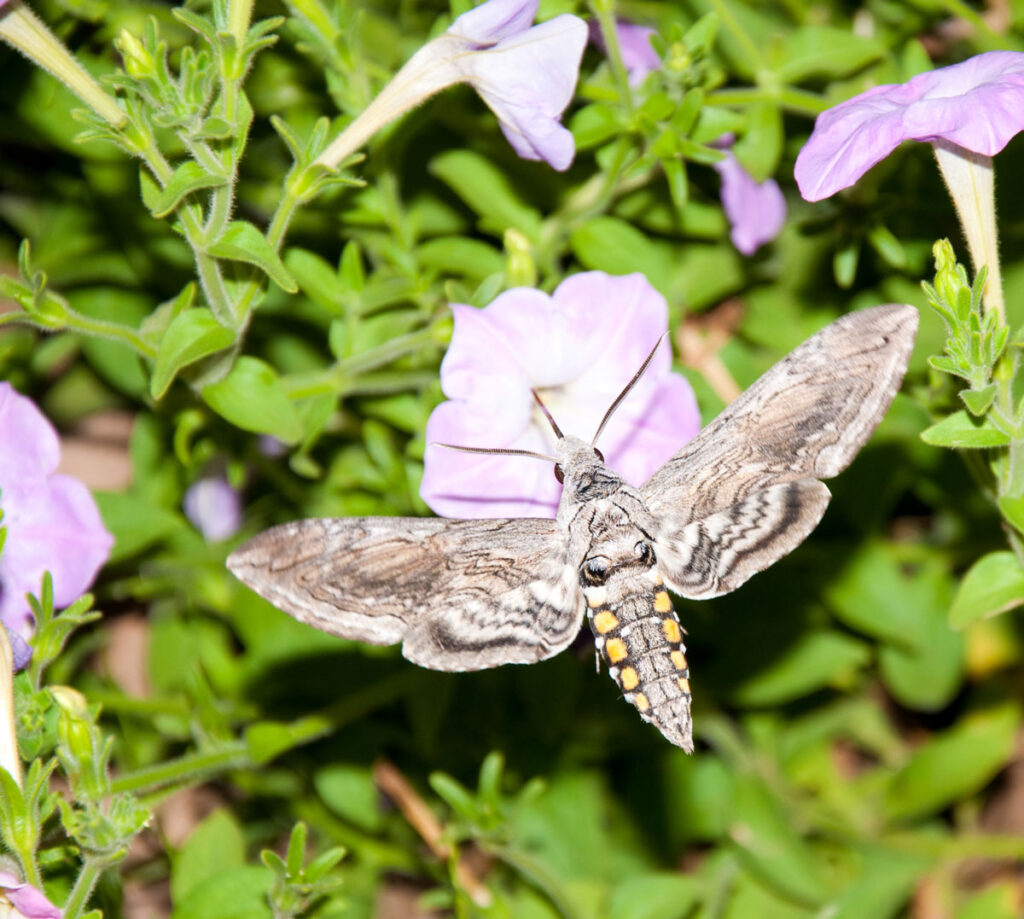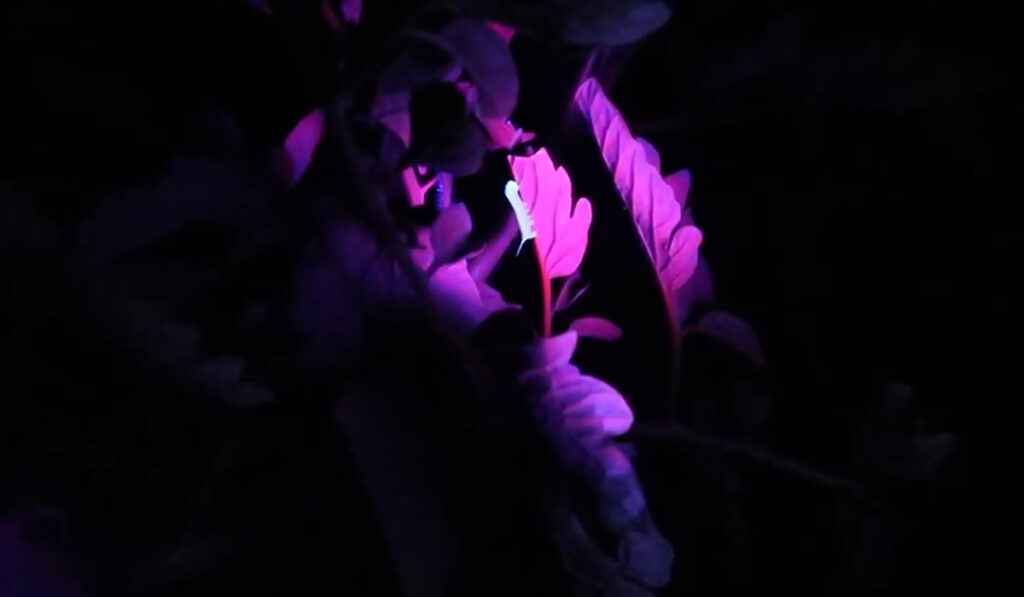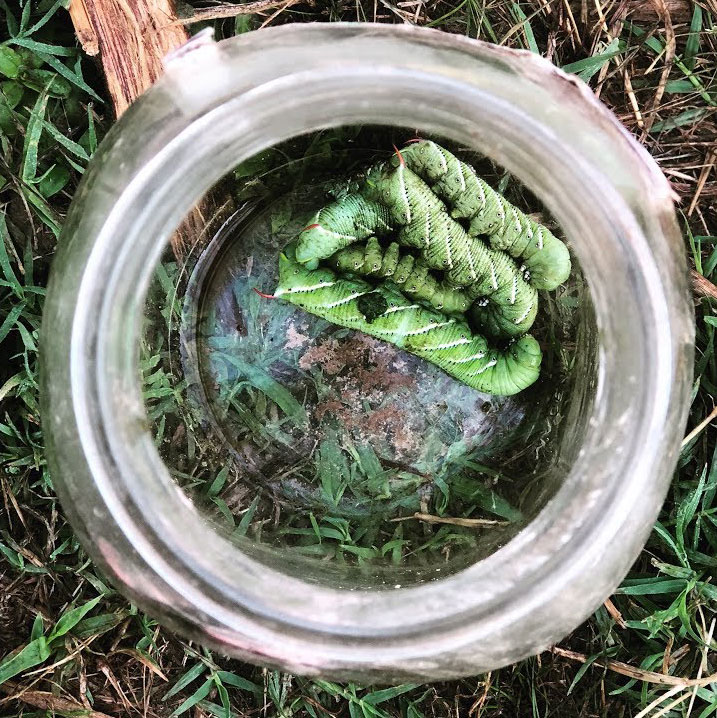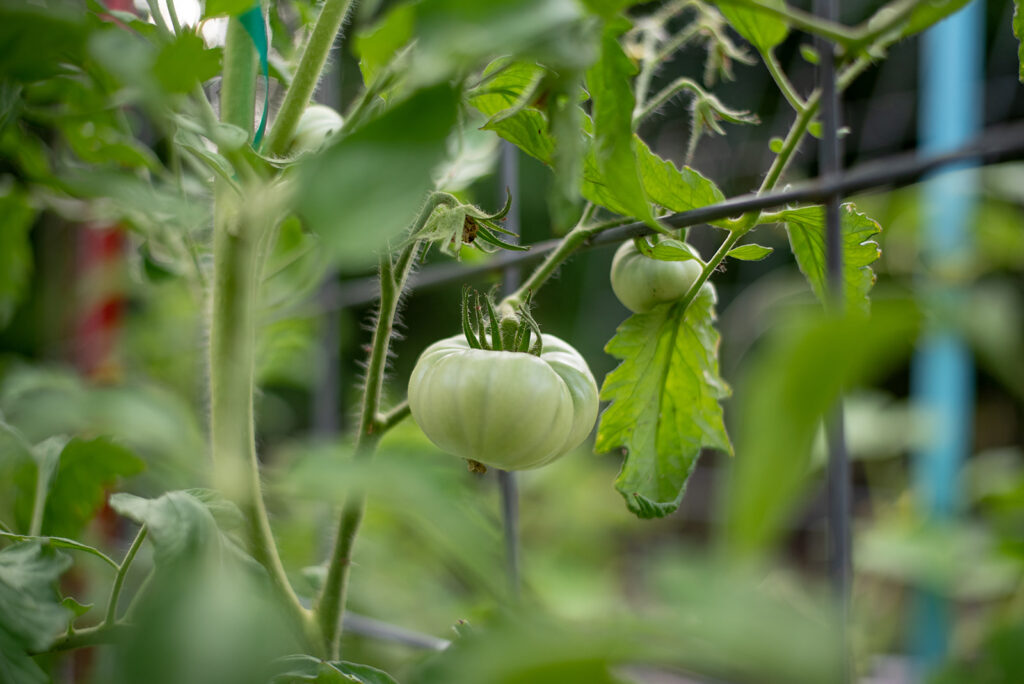Want to know how to get rid of tomato hornworms? Learn how to stop the devastating damage in your vegetable garden caused by tomato hornworms with this easy, natural, and inexpensive method… a blacklight!

Why I Love This Method
Whenever you can get rid of garden pests naturally that makes me happy. I don't love using anything in the garden that's not necessary, especially when it's going on the food I'll be feeding my family.
With this method, no harsh chemical insecticides are needed. Just an $11 blacklight flashlight, and an evening adventure the kids will love!
What Is A Tomato Hornworm?
Tomato hornworms are very large caterpillars with horned tails. When grown to maturity, they are commonly known as the hawk moth, the sphinx moth, the five spotted moth, or scientifically, the Manduca quinquemaculata.
The first time you see one in your garden you will probably be shocked at the size (up to 5 inches long!), but they aren’t dangerous to you because they don’t bite or sting. Their pointy little horned tail is only an attempt at camouflaging itself.
Tomato hornworms do, however, pose a danger to your garden. They love to feast on tomato plants and can destroy an entire plant in just one day.

Life Cycle of Horned Tomato Worm
The tomato hornworm goes through a metamorphosis during its full life cycle.
They burrow into the ground during the winter and survive as pupae.
In the spring, they emerge as adult moths to mate and lay their eggs on the surfaces of the leaves of plants in the nightshade family.
When the eggs hatch, they start eating garden vegetation and can be full-grown in three to four weeks.
Once they are mature, the full-grown caterpillar will drop off the plants and burrow back into the soil to transform into pupae.
Moths emerge in two weeks to begin a second generation around mid-summer.
How to Spot a Hornworm Infestation
Hornworms in your garden can be very difficult to spot during daylight hours. The green caterpillars blend perfectly with the color of tomato leaves and stems.
If you notice holes beginning to appear in the leaves of your plants, dark green or black spots (which are their droppings) on the top or bottom of the leaves, missing stems, or wilting leaves, the culprit is likely larvae feeding on your plants.
What Will Kill Tomato Hornworms?
Out of frustration, many gardeners turn to commercially prepared insecticides to kill hornworms.
Unfortunately, even the use of organic insecticides can inadvertently kill beneficial insects such as the butterfly caterpillar. It is for this reason, removing tomato hornworms by hand is the best method.

How Do You Get Rid of Hornworms Naturally?
Instead of waiting for noticeable damage to show up on my plants, I proactively use a blacklight to hunt and gather the hornworms before they destroy my plants.
You can watch in the video above as I used this $11 blacklight flashlight from Amazon and set out for an evening hunt.
With the blacklight, we were able to find baby hornworms before they had a chance to do any serious damage to the plants!
The process is so simple:
- After dark, go out into your garden and shine the black light onto all the surfaces of your tomato plants.
- The worms will show up as fluorescent, and the glowing little creatures are very easy to spot.
- Remove every hornworm by hand, and either squish them, dispose of them in hot soapy water, or collect them in a jar to feed to your chickens.
- Repeat until you're certain all hornworms are gone from the garden (remember, any eggs may hatch for a few days even after you've collected every worm you can spot!)

How Do You Keep Tomato Hornworms Away?
Prevention is always the best method. Once you have taken care of your hornworm infestation, these tips can help you prevent them from coming back.
- Know which insects are beneficial! Beneficial insects such as ladybugs and green lacewings will feed on hornworms helping to cut down their population. Did you know there is a type of parasitic wasp that can also help? Braconid wasps will lay their eggs on hornworms. The eggs also feed on hornworms.
- Companion planting basil, dill, oregano, parsley, mustard, yarrow, or marigolds with your tomatoes can help deter hornworms.
- Covering your plants with row covers or a high tunnel could prevent moths from laying their eggs.
- Covering the ground with cardboard around your plants can help prevent the pupae from emerging from the soil.
- Practicing crop rotation can also help cut down on the pupae population in the soil.
There you have it! Order a flashlight or two and take the kids out on a nighttime adventure and save your harvest!
















